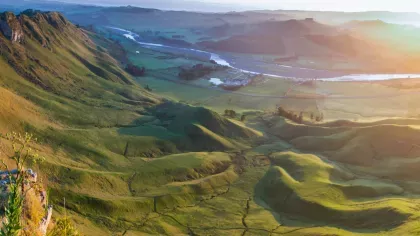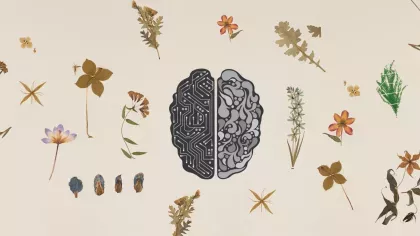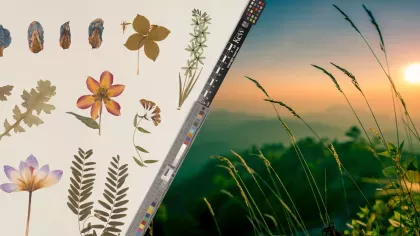8 November 2023
Uncovering the lost treasures of Darwin’s ‘rival’ Alfred Russel Wallace
We often stumble upon hidden rarities from our historic collection of over 7 million herbarium specimens, but every now and then, a real treasure turns up. That includes a specimen from the man who arrived at the theory of evolution, independent of Charles Darwin.

As we meticulously explore every nook and cranny of the herbarium as part of our Digitisation Project, delving into 300 years of science and history, we have uncovered many hidden gems. Among the beautiful and intriguing wonders that we’ve encountered, one, in particular, has left me, a Digitisation Officer at Kew, in awe.
One rainy day in March, as the afternoon was drawing to a close and we were winding down, I heard a chuckle from a nearby workstation. A colleague had found a specimen wrapped in an individual folder with the text: “A genuine A.R. Wallace specimen!” scrawled over it.
After calling me over to show me how cute it was that someone had once geeked out over this specimen, my colleague was wildly unprepared for the reaction that would ensue.
My jaw hit the ground.
An actual Alfred Russel Wallace specimen! A small climbing herb, picked and handled by the man himself. Who knows the last time this was taken out of the cupboards? How many people knew this was here? How many more Wallace specimens are there to be found in the thousands of cabinets that line the walls of the Kew herbarium? And here one was in my hands.


Now I am sure you’re thinking the exact same thing as my colleague: who the hell is Alfred Russel Wallace, and why is Rachel getting so excited about him?
Who was Alfred Russel Wallace?
Wallace, who lived between 1823-1913, was Charles Darwin’s long-forgotten and highly underrated counterpart.
He was a relatively poor Englishman born in Wales and one of nine children from a low-income family that travelled the country looking for work, yet despite all odds became an avid scientist and brilliant mind.
Wallace was ahead of his time for many reasons. With a passion for the natural world and insatiable curiosity, Wallace worked hard to realise his dreams of following in the footsteps of the famous naturalists Charles Darwin and Alexander von Humboldt and raised the money to travel the world.
He travelled to distant and remote places, much like Darwin, collecting as he went and sending his finds back to England.
Unlike Darwin, who had a significant bank balance and connections throughout high society, Wallace had to sell many of his finds just to continue on his adventure.

Wallace’s defining journey
In 1854, Wallace made it across the oceans to an area of the world known as the Indo-Australian Archipelago, also called the Malay Archipelago or Nusantara. The area, seen nowadays as an environmentally unique and scientifically astounding region, includes modern-day Indonesia, Malaysia, and Singapore.
Currently home to 20-25% of the world’s flora and fauna, little was known about Southeast Asia in Wallace’s day. What Wallace would discover here would not only blow his mind, but also change the world.

Wallace’s journey throughout the Indo-Australian Archipelago began at the northernmost part of the region, Singapore, where he travelled down in a southwesterly direction through Indonesia.
Here, Wallace encountered gibbons that had migrated down from Asia, and tigers that had crossed the land bridge between Indonesia and mainland Asia during periods of low sea level, such as the most recent Ice Age.
However, as Wallace continued his journey, something incredible and unprecedented occurred. When crossing the short stretch of water between Bali and Lombok, Wallace was struck with high waves and treacherous waters.

Face-to-face: Wallace finds the Wallace line
The near-impenetrable narrow strait between Bali and Lombok represented a barrier between the two islands, prompting distinct faunal assemblages to form either side of the line that were well-adapted to their environments.
Moreover, between other islands within the archipelago, distinct but related species were present (particularly evident in beetles, one of Wallace’s favourite taxonomic areas), suggesting gradual changes in species over generations. Wallace had just pieced together the process underpinning all life on earth: evolution.
The phenomenon that Wallace had just encountered between Bali and Lombok is what we now call the Wallace Line. A deep stretch of water between Bali and Lombok that had prevented the land masses from joining during periods of low sea level (such as the ice ages).

This line, being so treacherous to traverse, prevented the Oceanic and Asian species from mixing. The monkeys couldn’t swim across, nor could seeds float to the other side. It was (and still is) a complete divide between ecosystems.
Sharing his findings with the world
Wallace wasn’t sure what to do with this new-found information. How would he convince those in high society of what he had found? How was a relatively unknown collector with no money to his name supposed to change the scientific landscape?
He did exactly what I - and many of us experiencing imposter syndrome - would do. He wrote everything down and, in 1858, sent a letter to his idol Charles Darwin, the well-known and respected naturalist.

After presenting their joint research in 1858, Darwin's theory of natural selection was published the following year. To this day, Wallace’s part in the development of this theory has never been properly credited and, sadly, few outside of the scientific community recognise his name.
Regardless, Wallace was an astounding man with astounding accomplishments. An idol of mine and a true underdog in scientific history. And who doesn’t love an underdog?
So, no matter what the textbooks say, finding a Wallace specimen (from Lombok no less) will continue to be one of the highlights of the digitisation process for me!
Reference / further reading
- Alfred Russel Wallace: The Natural Selection for the Unsung Hero of Science.
- Hortal, J., Diniz-Filho, J. A. F., Low, M. E., Stigall, A. L., & Yeo, D. C. (2023). Alfred Russel Wallace’s legacy: an interdisciplinary conception of evolution in space and time. npj Biodiversity, 2(1), 3.
- Image of Wallace line: Wallace's line and the distribution of the liverworts of Sulawesi - Scientific Figure on ResearchGate.
Help us digitise our prestigious collections
Get involved with these new opportunities
-
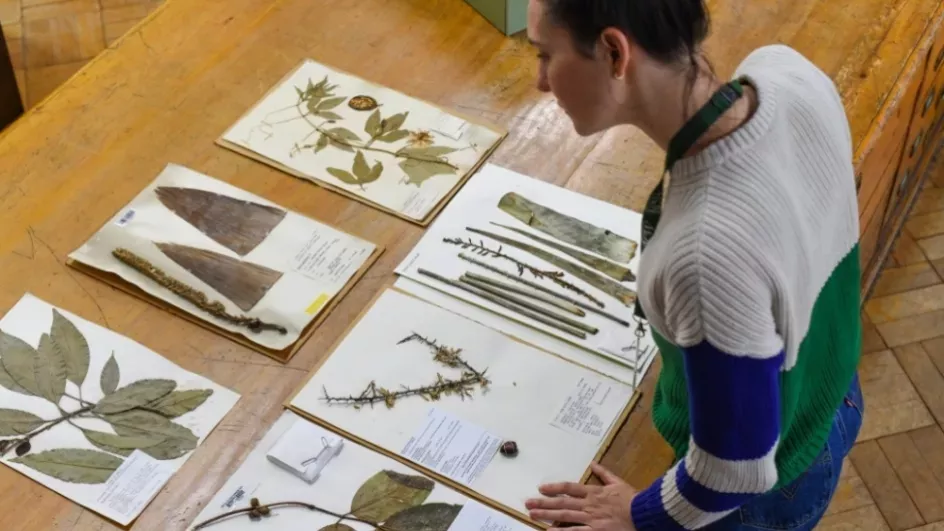
Volunteer
Become part of Kew's ambitious project and help make one of the largest collections in the world freely accessible to everyone around the world.
-

Donate
Donate today and immortalise a piece of botanic history that can aid research into urgent global challenges - helping protect our planet for future generations.
-
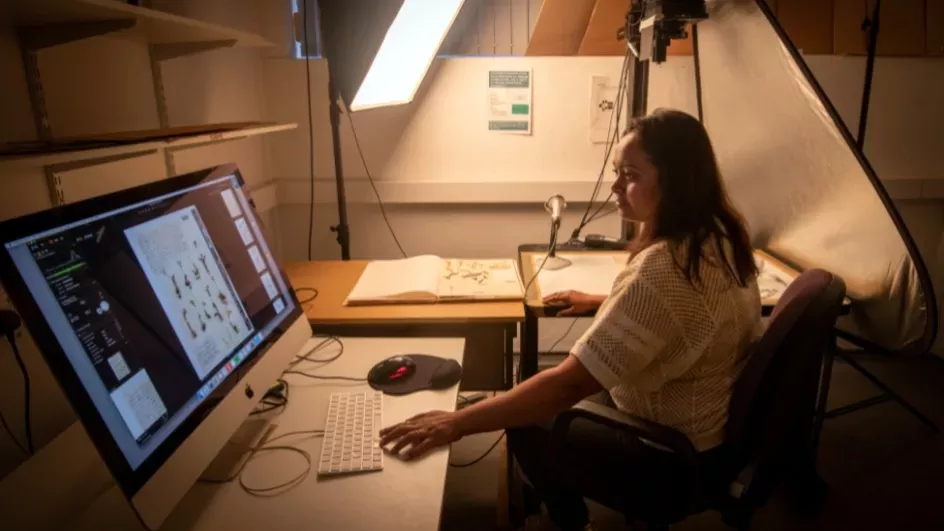
Join
See what job opportunities are available to digitise our collection and play a part in helping scientists across the world access our invaluable specimens.

